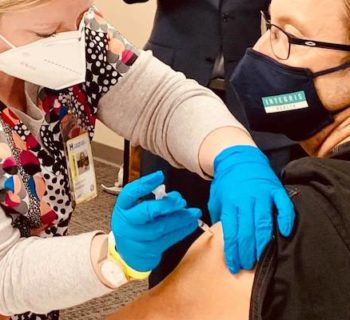ENID, OK - It is often believed that there are more suicides around the holidays than any other time. But according to data from the National Center for Health Statistics and the CDC, not only do suicides not spike during the holiday period, but the months of November, December and January typically have the lowest daily numbers of suicide during the year.
-
The Annenberg Public Policy Center (APPC) at the University of Pennsylvania has been studying the myth of higher holiday suicides since 2000. For years, many news and feature stories have endorsed the erroneous idea that suicide is more common around the holidays. It's one of those things we all have filed away in the back of our brain that we heard somewhere so it must be true.
-
The trend has now shifted from stories that support the myth to those that debunk it which is why Enid Buzz is posting this information. From what I've read online many think the myth may have developed over the years because of the movie "It's a Wonderful Life" and some people feeling blue during the winter months.
-
Some people do get "down" at certain times of the year. Seasonal affective disorder (SAD) is a type of depression that's related to changes in seasons. Most people with SAD, have symptoms start in the fall and continue into the winter months, sapping energy and making some feel moody. So the holiday blues do exist but they normally do not lead to suicide.
-
People who are clinically depressed are at higher risk for suicide. Up to 90 percent of people who die by suicide have clinical depression or another mental health disorder, often co-occurring with substance abuse. Adverse or traumatic life events, especially in combination with clinical depression, increase suicide risk.
-
Most, but not all, people who die by suicide exhibit warning signs. Here are those warning signs:
• Talking about wanting to die
• Looking for a way to kill oneself
• Talking about feeling hopeless or having no purpose
• Talking about feeling trapped or in unbearable pain
• Talking about being a burden to others
• Increasing the use of alcohol or drugs
• Acting anxious, agitated or recklessly
• Sleeping too little or too much
• Withdrawing or feeling isolated
• Showing rage or talking about seeking revenge
• Displaying extreme mood swings
-
The more of these signs a person shows, the greater the risk. Warning signs are associated with suicide but may not be what causes a suicide. If someone you know exhibits warning signs of suicide do not leave them alone and remove any firearms, alcohol, drugs or sharp objects that could be used in a suicide attempt.
-
If someone you know is talking about suicide or has attempted suicide take them to an emergency room or seek help from a medical or mental health professional immediately. If you or someone you know needs help, call 1-800-273-8255 for the National Suicide Prevention Lifeline.
-
There are also resources available through the Garfield County Suicide Prevention Task Force. For information contact a licensed professional counselor at YFS, at (580) 747-3851.
-
Media outlets should refer to www.reportingonsuicide.org for guidelines on reporting suicide information.
-

-








